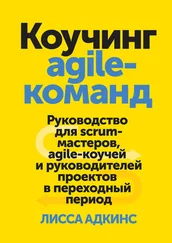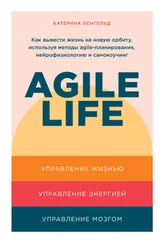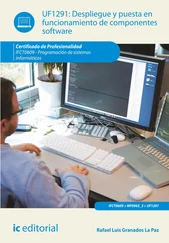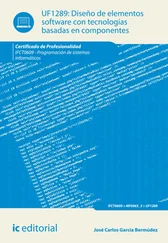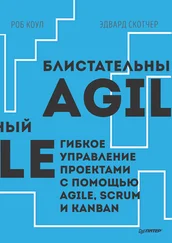As designers, our practical understanding will mainly be expressed in the ability to construct specific language-games of design in such a way that the users can develop their understanding of future use by participating in design processes.
As mentioned above, there is a further important aspect of language-games: We make up the rules as we go along. A skilled designer should be able to assist in such transcendental rule-breaking activities. Perhaps, this is the artistic competence that a good designer needs.
To really learn the language-game of the use activity by fully participating in that language-game is, of course, an even more radical approached for the designer. Less radical but perhaps more practical would be for designers to concentrate design activity on just a few language-games of use, and for us to develop a practical understanding of useful specific language-games of design (Ehn & Kyng, 1987). Finally, there seems to be a new role for the designer as the one who sets the stage for a shared design language-game that makes sense to all participants.
Some Lessons on Design, Skill, and Participation
As in the first practice-oriented part of this paper on designing for democracy at work, I end this second philosophically oriented part on skill-based participatory design with some lessons for work-oriented design.
General lessons on work-oriented design include:
1. Understanding design as a process of creating new language-games that have family resemblance with the language-games of both users and designers gives us an orientation for doing work-oriented design through skill-based participation--a way of doing design that may help us transcend some of the limits of formalization. Setting up these design language-games is a new role for the designer.
2. Traditional "systems descriptions" are not sufficient in a skill-based participatory design approach. Design artifacts should not be seen primarily as means for creating true "pictures of reality," but as means to help users and designers discuss and experience current situations and envision future ones.
3. "Design-by-doing" design approaches such as the use of mockups and other prototyping design artifacts make it possible for ordinary users to use their practical skill when participating in the design process.
Lessons on skill in the design of computer-based systems include:
1. Participatory design is a learning process in which designers and users learn from each other.
2. Besides propositional knowledge, practical understanding is a type of skill that should be taken seriously in a design language-game since the most important rules we follow in skillful performance are embedded in practice and defy formalization.
3. Creativity depends on the open-textured character of rule-following behavior, hence a focus on traditional skill is not a drawback to creative transcendence but a necessary condition. Supporting the dialectics between tradition and transcendence is the heart of design.
Lessons on participation in design of computer-based systems include:
1 . Really participatory design requires a shared form of life--a shared social and cultural background and a shared language. Hence, participatory design means not only users participating in design but also designers participating in use. The professional designer will try to share practice with the users.
2. To make real user participation possible, a design language-game must be set up in such a way that it has a family resemblance to language-games the users have participated in before. Hence, the creative designer should be concerned with the practice of the users in organizing the design process, and understand that every new design language-game is a unique situated design experience. There is, however paradoxical it may sound, no requirement that the design language-game make the same sense to users and designers. There is only requirement that the designer set the stage for a design language-game in which participation makes sense to all participants.
Beyond the Boredom of Design
Given the Scandinavian societal, historical, and cultural setting, the first part of this chapter focused on the democratic aspect of skill-based participatory design, especially the important role of local trade unions and their strategies for user participation. In the second part, some ideas inspired by Ludwig Wittgenstein s philosophical investigations were applied to the everyday practice of skill-based participatory design. Practical understanding and family resemblance between language-games were presented as fundamental concepts for work-oriented design.
The concept of language-games is associated with playful activity, but what practical conditions are needed for such pleasurable engagement in design? Is the right to democratic participation enough?
In fact, the experiences from the work-oriented design projects indicates that most users find design work boring, sometimes to the point where they stop participating. This problem is not unique to the Scandinavian work-oriented design tradition. It has, for example, been addressed by Russell Ackoff (1974), who concluded that participation in design can be only successful if it meets three conditions: (1) it makes a difference for the participants, (2) implementation of the results is likely, and (3) it is fun.
The first two points concern the political side of participation in design. Users must have a guarantee that their design efforts are taken seriously. The last point concerns the design process. No matter how much influence participation may give, it has to transcend the boredom of traditional design meetings to really make design meaningful and full of involved action. The design work should be playful. In our own later projects, we have tried to take this challenge seriously and have integrated the use of future workshops, metaphorical design, role playing and organizational games into work-oriented design (Ehn & Sjogren, (1991).
Hence, the last lesson from Scandinavian designs is that formal democratic and participatory procedures for designing computer-based systems for democracy at work are not sufficient. Our design language-games must also be organized in a way that makes it possible for ordinary users not only to utilize their practical skill in the design work, but also to have fun while doing so.
...
Reflections on Ehn's Writing
Each time I read Ehn's article, I discover I may be more in debt to his writing than I thought. Rereading it just prior to writing this paragraph, I was struck by his use of the Shu-Ha-Ri construct, to his attention to understanding through doing, and not only the use of skill in doing, but developing understanding through doing.
I evidently wasn't ready to read very many of his words in 1993, and have grown into them over the years. At this point, I can't tell how many of the ideas in this book I discovered on my own, and how many grew from seeds his article planted in my then-unconscious. It makes me wonder wonder how many other concepts he expressly mentions that I haven't yet noticed. I hope you will take the time to reread this article in another year or two.
Miyamoto Musashi was a 17th century samurai who never wrote software.
He claimed never to have lost a fight. Of course, in those days, losing a fight was linked with some serious body damage, and so being alive with all limbs in place at the age of 70 makes his claim quite believable.
There are two notable books about Musashi. One is a romantic novel series, called "Musashi," which portrays his early life and development, including fights. It is a wonderful read, and also describes his fighting approach.
The other was written by him, late in life: The Book of Five Rings, or Go Rin No Sho (I have the Thomas Cleary translation, Shambala, 1994). It outlines his approach to fighting: specific individual moves, directiing large groups, and mental states. It is short, clear, and wonderfully absent of the usual Zen doubletalk ("Be by not being, fight by not fighting, win by losing" and so on).
Читать дальше

